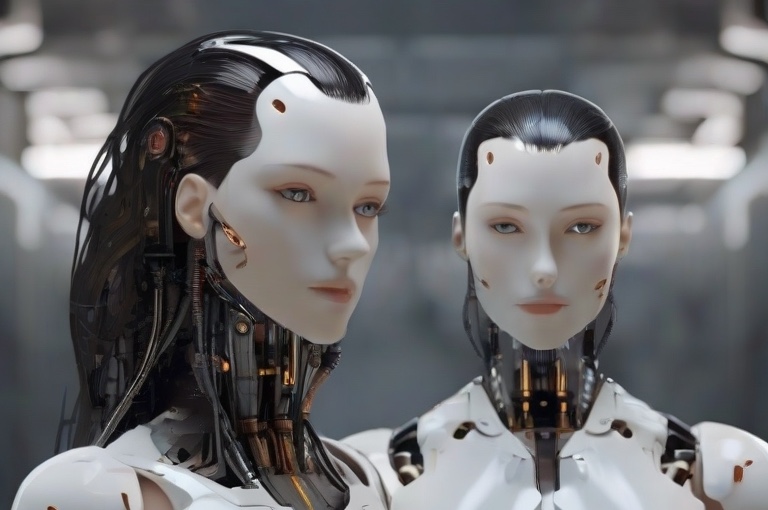Python has long been a popular language for AI development due to its simplicity and ease of use. However, recent news stories have brought to light some exciting developments in the world of Python and AI. One such development is the unveiling of a new programming language called Mojo by Modular, an AI start-up with above-average technical cred. Mojo aspires to combine the usability of Python with the speed of C. This new programming language aims to combine full Python compatibility with low-level programming features, along with the ability to harness GPUs and other AI accelerators. It’s an exciting time for Python and AI development, and this comprehensive guide will take you through everything you need to know about programming with Python for AI.
What is Python and why is Python so popular for AI?
Python is a high-level, general-purpose programming language. Its design philosophy highlights code readability with the use of significant indentation via the off-side rule. Python is dynamically typed, and garbage collected. It supports multiple programming paradigms, including structured (particularly procedural), object-oriented and functional programming.
Python is popular for AI development because of its simplicity and ease of use. Its comprehensive standard library, often described as “batteries included,” provides a wide range of tools and modules that can be used for AI development. Additionally, Python has a large and active community that contributes to the development of new tools and libraries for AI.
Some benefits of using Python for AI include its readability and ease of use, which can help speed up development time. Its dynamic nature allows for rapid prototyping and experimentation. Python’s comprehensive standard library and large community provide access to a wide range of tools and resources for AI development.
Python’s readability and ease of use make it an attractive choice for AI development. Its syntax is designed to be clear and concise, making it easier for developers to write and maintain code. This can help speed up development time and reduce the likelihood of errors.
Python’s dynamic nature allows for rapid prototyping and experimentation. Developers can quickly test out ideas and make changes to their code without having to go through a lengthy compilation process. This can help speed up the development process and allow for more rapid iteration.
Python’s comprehensive standard library provides a wide range of tools and modules that can be used for AI development. These include libraries for data manipulation, machine learning, and natural language processing. Additionally, Python has a large and active community that contributes to the development of new tools and libraries for AI.
Overall, Python’s combination of readability, ease of use, dynamic nature, comprehensive standard library, and large community make it an attractive choice for AI development.
Getting Started with Python
Installing Python: Python can be installed on a variety of operating systems, including Windows, macOS, and Linux. The installation process varies depending on the operating system but generally involves downloading an installer from the Python website and following the prompts to complete the installation.
Setting up a development environment: Once Python is installed, you’ll need to set up a development environment to write and run your Python code. This can include installing a code editor or integrated development environment (IDE) such as PyCharm or Visual Studio Code, as well as any necessary libraries or modules for your project.
Learning the basics of Python syntax: Before you can start writing your own Python programs, you’ll need to learn the basics of Python syntax. This includes understanding how to define variables, write functions, and use control structures such as if statements and loops. There are many resources available online to help you learn Python syntax, including tutorials and documentation.
AI with Python
Python is a popular language for AI development due to its simplicity and ease of use. Its comprehensive standard library and large community provide access to a wide range of tools and resources for AI development.
- Machine learning: Machine learning is a subset of AI that involves the development of algorithms that can learn from and make predictions or decisions based on data. Python has many libraries and frameworks for machine learning, including scikit-learn, TensorFlow, and PyTorch.
- Natural language processing: Natural language processing (NLP) is a field of AI that focuses on the interaction between computers and humans in natural language. This includes tasks such as language translation, sentiment analysis, and text generation. Python has many libraries for NLP, including NLTK and spaCy.
- Computer vision: Computer vision is a field of AI that focuses on enabling computers to interpret and understand visual information from the world. This includes tasks such as object recognition, image classification, and facial recognition. Python has many libraries for computer vision, including OpenCV and scikit-image.
- Deep learning: Deep learning is a subset of machine learning that involves the use of neural networks with many layers to model complex patterns in data. Python has many libraries for deep learning, including TensorFlow, Keras, and PyTorch.
Resources for Learning Python for AI
There are many resources available for learning Python for AI. Here are some examples:
Online tutorials: Google’s Python Class is free and provided by the developers at Google. Real Python has a step-by-step tutorial on how to build a neural network from scratch as an introduction to the world of artificial intelligence (AI) in Python.
Communities: Hackr.io is an online community that provides programming courses and tutorials.
Conclusion
The future of AI is bright. We are already seeing the impact of AI in our everyday lives; from the way we shop to the way we get around. As AI continues to develop, we can expect to see even more amazing things, such as self-driving cars, virtual assistants that can do our bidding, and even robots that can help us with our daily tasks.
Python is playing a key role in the development of AI. It is a powerful and versatile language that is well-suited for machine learning and artificial intelligence. There are many Python libraries and frameworks that are available for AI development, making it easy to get started.
If you are interested in learning more about AI, Python is a great place to start. There are many online resources and tutorials that can help you learn the basics of Python and AI. Once you have a basic understanding, you can start building your own AI applications.





















